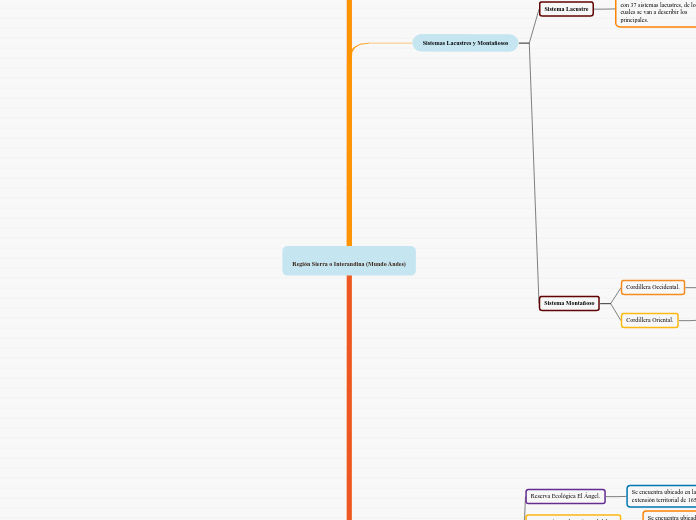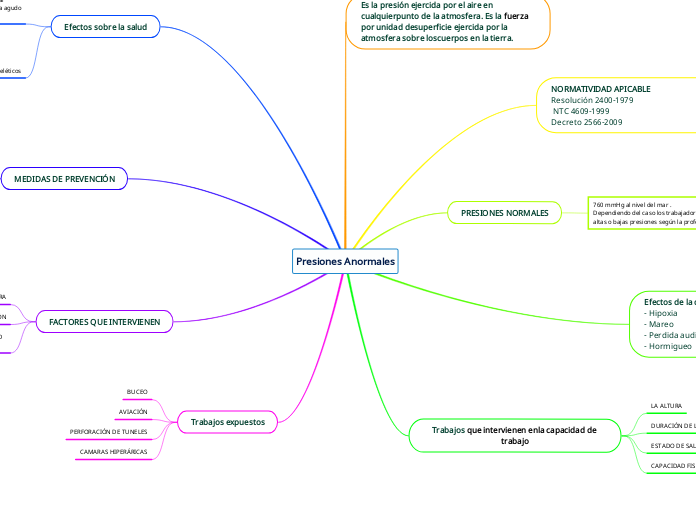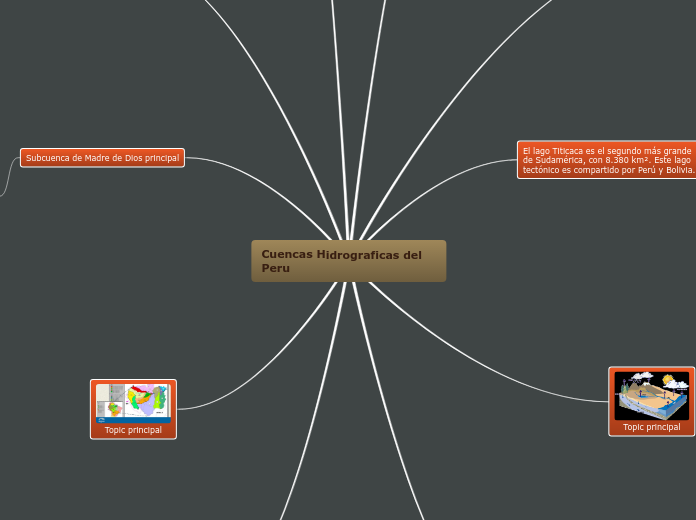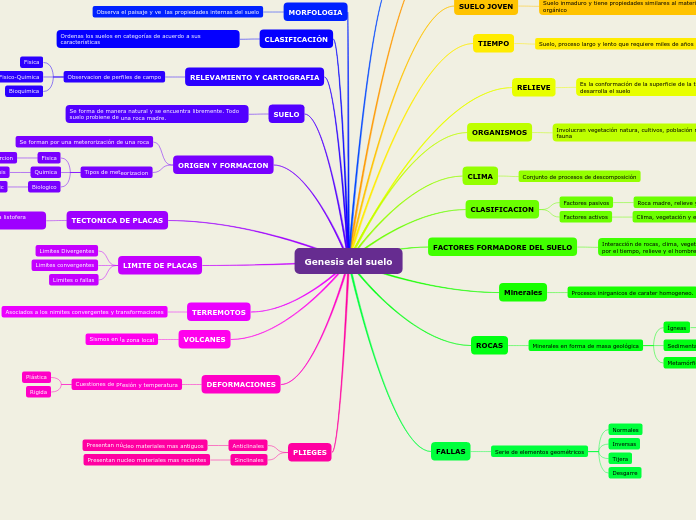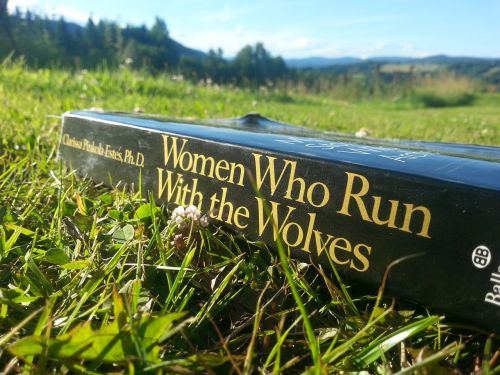Región Sierra o Interandina (Mundo Andes)
To name your story, you have to think about the overall message and what you want your audience to understand from the story. Also, make it relevant and easy to remember.
Recursos y Atractivos Turísticos Naturales y Culturales.
The ending of a story is essential. We all know that if the ending is weak, what happened before loses its importance. So make it unpredictable, but fair. A resolved ending answers all the questions and ties up any loose threads from the plot.
Principales Atractivos Turísticos Culturales
This is the closure section of the story.
See examples of possible outcomes below:
- all problems have been solved
- it's clear how each one of your characters ends up
- your main character is transformed by the challenge
Museo Rumiñahui.
Museo Nacional de Historia de la Medicina.
Mitad del Mundo.
Museo Arqueológico de Cayambe.
Museo San Vicente.
Museo Religioso y Arqueológico Señor del Terremoto.
Complejo Arqueológico Pambamarca. .
Iglesia Matriz El Tambo.
Try answering these questions to come up with a closure:
- Have all the problems been solved?
- Is there a clear picture of what happens with each character in the story?
- Has the challenge transformed your main character?
- How do the characters feel in the end?
Principales Atractivos Turísticos Naturales
This is the moment when the main character surpasses the last obstacle and finally faces their greatest challenge.
The climax usually follows one of these patterns:
- realization
- resolution
- choice
Type in your answer.
Reserva Geobotánica del Pululahua.
Refugio Ecológico Molinuco o Cascada Molinuco.
Mirador de Hierba Buena.
Valle hermoso.
Gran Cascada del Río Pita.
Laguna Culebrillas.
Cerro Cojitambo.
Flora y Fauna
The middle of the story is where you add layers of complications that will lead to the end. Reveal more about the character's journey. Did their personality go through changes? How did they overcome the challenges? And as you build up the story’s central conflict, make it more personal to that character. Also, from the middle act, you have to lead into the final act.
Principal Fauna
There wouldn't be any tension and excitement in your story if there weren't any obstacles in your character's way.
Su fauna está compuesta por animales que puedan migrar con facilidad a otras regiones, o también pueden quedarse en la región. Las especies que se pueden encontrar en la sierra ecuatoriana son: Cóndor andino, musguerito, pijuí motado, zamarrito, muslinegro, puma, lobo de páramo, capuchino frentiblanco, perezoso didáctilo, venado de páramo, pecarí de collar, conejo andino, tejón americano, comadreja andina.
A story is nothing more than a character overcoming a series of difficulties to reach the desired goal. Obstacles usually create suspense and conflict. In overcoming obstacles, there is growth: weak becomes strong; hatred turns into love; sadness into happiness; wrong into right; lies into truth; or evil becomes good.
See a few examples below:
- stopping a meteor
- finding a killer
- finding love
Principal Flora
Your character(s) need(s) motivation in order to solve the challenge(s).
La flora esta domina por el frailejón, dado que el clima del páramo es frío y húmedo, igualmente podemos encontrar otras plantas tales como: orquídeas, bromelias, asteráceas, poáceas, araliáceas, escrofulariáceas y rosáceas.
Secondary characters might also have motives that lead them to cross paths with the main character or which might trigger them to help the main character.
Áreas Protegidas
Parque Nacional Podocarpus.
Each story has a main character and that character usually needs to solve a problem or challenge. The character's challenge is the one that creates tension throughout the story.
Se encuentra ubicado en la provincia de Loja y Zamora Chinchipe, cuenta con una extensión territorial de 146280hectáreas. Su año de creación fue en 1982.
Parque Nacional Cajas.
Type in any other challenges which other characters in the story need to face.
Se encuentra ubicado en la provincia de Azuay, cuenta con una extensión territorial de 28544 hectáreas. Su año de creación fue en 1977.
Parque Nacional Yacuri.
Se encuentra ubicado en la provincia de Loja y Zamora Chinchipe, cuenta con una extensión territorial de 43090 hectáreas. Su año de creación fue en 2009.
Área Nacional de Recreación Quimsacocha.
Se encuentra ubicado en la provincia de Azuay, cuenta con una extensión territorial de 3217 hectáreas. Su año de creación fue en 2012.
Parque Nacional Sangay.
Se encuentra ubicado en la provincia de Cañar, Chimborazo, Morona Santiago y Tungurahua , cuenta con una extensión territorial de 502105hectáreas. Su año de creación fue en 1975.
Reserva de Producción de Fauna Chimborazo.
Se encuentra ubicado en la provincia de Bolívar, Chimborazo y Tungurahua, cuenta con una extensión territorial de 58560 hectáreas. Su año de creación fue en 1986.
Reserva Biológica Colonso Chalupas.
Se encuentra ubicado en la provincia de Napo, cuenta con una extensión territorial de 93246 hectáreas. Su año de creación fue en 2014.
Parque Nacional Cotopaxi.
Se encuentra ubicado en la provincia de Cotopaxi, Napo y Pichincha, cuenta con una extensión territorial de 33393 hectáreas. Su año de creación fue en 1975.
Parque Nacional Llanganates.
Se encuentra ubicado en la provincia de Cotopaxi, Napo, Pastaza y Tungurahua, cuenta con una extensión territorial de 219931 hectáreas. Su año de creación fue en 1996.
Área Nacional de Recreación El Boliche.
Se encuentra ubicado en la provincia Cotopaxi y Pichincha, cuenta con una extensión territorial de 392 hectáreas. Su año de creación fue en 1979.
Reserva Ecológica Ilinizas.
Se encuentra ubicado en la provincia de Cotopaxi, Los Ríos, Pichincha y Santo Domingo de los Tsáchilas cuenta con una extensión territorial de 500 hectáreas. Su año de creación fue en 1996.
Refugio de Vida Silvestre Pasochoa.
Se encuentra ubicado en la provincia de Pichincha, cuenta con una extensión territorial de 500 hectáreas. Su año de creación fue en 1986.
Parque Nacional Cayambe Coca.
Se encuentra ubicado en la provincia de Imbabura, Napo, Pichincha y Sucumbíos, cuenta con una extensión territorial de 404103 hectáreas. Su año de creación fue en 1970.
Reserva Ecológica Cotacachi Cayapas.
Se encuentra ubicado en la provincia de Esmeraldas e Imbabura, cuenta con una extensión territorial de 243.638 hectáreas. Su año de creación fue en 1968.
Reserva Ecológica Antisana.
Se encuentra ubicado en la provincia de Napo y Pichincha, cuenta con una extensión territorial de 120000 hectáreas. Su año de creación fue en 1993.
Reservorio Geobotánica Pululahua.
Se encuentra ubicado en la provincia de Pichincha, cuenta con una extensión territorial de 3383 hectáreas. Su año de creación fue en 1966.
Reserva Ecológica El Ángel.
In most stories, there are 3 challenges. The number 3 is a mystical number symbolizing completeness. Try to come up with interesting challenges with which your character needs to struggle.
See a few examples below:
- turns into a werewolf at night
- is sent back in time
Se encuentra ubicado en la provincia de Carchi, cuenta con una extensión territorial de 16541 hectáreas. Su año de creación fue en 1992.
Sistemas Lacustres y Montañosos
Sistema Montañoso
Why does your character need to confront this challenge? What does he/she expect to accomplish by solving it?
See a few examples:
- will marry in 3 days
- can fix the mistakes of the past
Cordillera Oriental.
Es la más alta del Ecuador, sus bases son anchas y terminan en cumbres altas y puntiagudas, sus principales elevaciones son el Mirador, Cayambe, Antisana, Cotopaxi, Tungurahua, Altar y Sangay.
Cordillera Occidental.
Se extiende por todo el país de norte a sur, su pico mas alto es el volcán Chimborazo, además encontramos en esta cordillera a los Illinizas, el Carihuairazo, Cotacahi, Chiles entre otros.
Sistema Lacustre
La Sierra o Interandina cuenta con 37 sistemas lacustres, de los cuales se van a describir los principales.
Carchi (Espejo)
Lagunas del Voladero.
Se encuentra ubicada en la Reserva Ecológica El Ángel, tiene una extensión aproximada de 17has, su perímetro es de 1.55km.Cuenta con una temperatura promedio de 10 °C en sus aguas.
Loja (Saraguro)
Laguna Chinchilla.
Se encuentra limitada con Loja y El Oro, para llegar se tiene que realizar un recorrido de dos horas desde Zaruma en carro y luego dos horas de caminata para llegar a la laguna, cuenta con una superficie de aproximadamente 12 hectáreas y tiene una temperatura promedio de 15 ºC.
Chimborazo (Riobamba)
Lagunas del Altar.
Se encuentra en el Parque Nacional Sangay de la provincia de Chimborazo, se encuentran a una altitud que oscila entre los 3.028 a los 4.552 m.s.n.m, cuenta con una temperatura que va desde los 7°C a 15ºC.
Loja (Loja)
Lagunas del Compadre.
Se ubica dentro del Parque Nacional Podocarpus entre la frontera de la provincia de Loja y la provincia de Zamora Chinchipe conjunto de lagos formado por 50 lagunas de origen glaciar, abarca 28.114,78 clima lluvioso sub‐temperado, con temperaturas promedio entre 6°C y 12°C
Cañar (Cañar)
Laguna de Culebrillas.
Se encuentra ubicada al pie del cerro Yanahurco en la Provincia de Cañar, tiene 1350 metros de largo por 445 metros de ancho, la profundidad en la parte central es de 19.20 metros, tiene una temperatura que oscila entre los 6°C a 15º C.
Imbabura (Otavalo)
Lago San Pablo.
Se encuentra ubicado en la parroquias Gonzáles Suárez, Eugenio Espejo y San Rafael, tiene una altura de 2660 m.s.n.m, cuenta con un área de 7 km2 y en el centro del lago tiene 48 metros de profundidad. La temperatura promedio es de 12°C.
Pichincha (Cayambe)
Laguna de San Marcos.
Se encuentra ubicada en la parroquia de Olmedo, perteneciente a la Reserva Ecológica Cayambe Coca, mide aproximadamente 6000 metros, el agua de la laguna es de color azul oscuro. También cuenta con una temperatura en el agua de 0°C a 12º C.
Imbabura (Ibarra)
Laguna de Yahuarcocha.
Se encuentra ubicada en la Provincia de Imbabura a 4 kilómetros de la ciudad de Ibarra, cuenta con un espejo de agua de 257 hectáreas con un perímetro navegable de 7970 m. Tiene una temperatura en el agua de 11°C.
Cotopaxi (Salcedo)
Laguna de Yambo.
Se encuentra ubicado entre las ciudades de Ambato y Latacunga, a 15 minutos de Salcedo llegando por la Panamericana, mide aproximadamente 1.100 metros de largo por 290 de ancho, durante todo el año su temperatura varía entre 8,4°C a 24, 2ºC.
Chimborazo (Riobamba)
Laguna Negra.
Se encuentra ubicada en el Parque Nacional Sangay, tiene un diámetro de 710 metros, su agua es de color azul claro, también tiene una temperatura que oscila entre los 6°C y 8° C.
Cotopaxi (Sigchos)
Laguna Quilotoa.
Se encuentra ubicado a 15 kilómetros de la Parroquia Zumbahua, Provincia Cotopaxi, su extensión es de 3 km. de diámetro con muros verticales de piedras en forma de picos y 440 m. entre el nivel del agua y el límite superior del volcán. También posee un clima entre los 12°C y 20°C.
Cotopaxi (Salcedo)
Lagunas de Anteojos.
Se encuentra ubicada en la nueva vía Salcedo-Tena,
su extensión es aproximadamente de 1.100 metros de largo por 290 metros de ancho.Su clima es de 7°C.
Imbabura (Otavalo) Lagunas de Mojanda.
Se encuentra en el límite entre Pichincha e Imbabura, a los pies del cerro Fuya Fuya, pasando la población de Pedro Moncayo, a 17 km al sur de Otavalo, tiene un clima promedio de 8°C, las condiciones cambian de acuerdo al paso de las horas del día, se encuentra a una altura de 3720 metros sobre el nivel mar.
Relieves
The setting (time & place) of a story can change throughout the plot.
Están denominados por la Cordillera de los Andes.
Más al este se encuentran la Tercera Cordillera: esta conformado por el cerro Reventador, el macizo Napo-Galeras, la sierra de Cutucú y la sierra del Cóndor.
Depresión Central: se encuentra entre ambas unidades, presenta grandes irregularidades topográficas como las hoyas o nudos, que dificultan la comunicación entre ellas.
The weather is an important element in your story because it can highly influence the ambiance and the mood of the characters.
Cordillera Occidental: es de menor altura y sus principales elevaciones son el volcán Chimborazo (el más alto del país, con 6310 m), Guagua Pichincha, Atacazo, Corazón y los Illinizas.
Your story can take place wherever your imagination will take you to.
For example: in an elevator, in an enchanted forest, etc. Don't forget to give details of the environment each time the setting changes, otherwise, the story can be confusing. Also, mention the seasons as each of them has unique weather and events.
Cordillera Oriental: es la más alta y sus principales elevaciones son el volcán Cotopaxi , Cayambe, Antisana, Tungurahua, Altar y Sangay.
The time of the story can also change. It can describe the event of a single day or can include an entire year's plot. Anyway, don't forget to mention it.
Geológica
Nudos.
Nudo Ayabaca.
Nudo Sabanilla.
Nudo Cajanuma.
Nudo Guagrauma.
Nudo Portete.
Nudo Curiquingue o Nudo Buerán.
Nudo Azuay.
Nudo. Tiocajas.
Nudo Igualata - Sanancajas.
Nudo Tiopullo.
Nudo Mojanda Cajas.
Nudo Altos de Boliche.
Nudo de Pasto.
Hoyas.
Las hoyas laterales occidentales estan conformadas por Las del Toachi, Chimbo, Chanchán, Cañar, Jubones, Puyango, Catamayo, Macará.Las hoyas laterales orientales son Las del Aguarico, Quijos, Napo, Pastaza, Upano, Zamora Chinchipe y Cenepa.
Hoyas centrales: occidentales de Chota y Guallabamba y orientales de Patate, Chambo y Paute.En los bordes de estas hoyas están los cráteres de los volcanes Chiles, Yanahurco, Cotacachi, Mojanda, Pichincha, Atacazo, Corazón, Illiniza, Quispicacha, Casaguala, Sagoatoa, Carihuairazo, Chimborazo y Tixán, en la cordillera Occidental y en la Cordillera Real estan Cayambe, Sarahurco, Sincholagua, Antisana, Cotopaxi, Quilindaña, Tungurahua, Altar y Sangay.
División Geográfica
In the beginning of the story (or the exposition), you will need to introduce the setting and characters. You might also want to introduce the main conflict. This part of the story is important because it gives the reader necessary background information and maybe even a first insight into a character’s personality.
Provincias pertenecientes la Sierra o Interandina:
Type in the name of your character.
Provincia de Tungurahua.
Add other qualities/attributes of the character.
Su capital es Ambato y su fundación fue el 3 de julio de 1860.
Provincia de Pichincha.
Su capital es Quito y su fundación fue el 25 de junio de 1824.
Provincia de Loja.
What is your character's main goal?
fight Evilfind lovedefeat his/her enemyrule the worldmake friendstime travelmake an awesome discoveryOther
Su capital es Loja y su fundación fue el 8 de diciembre de 1548.
Provincia de Imbabura.
Su capital es Ibarra y su fundación fue el 25 de junio de 1824.
Provincia de Chimborazo.
Su capital es Riobamba y su fundación fue el 25 de junio de 1824.
Provincia de Cotopaxi.
Su capital es Latacunga y su fundación fue el 1 de abril de 1851.
Provincia de Carchi.
Su capital es Tulcán y su fundación fue el 19 de noviembre de 1880.
Provincia de Cañar.
Su capital es Azogues y su fundación fue el 23 de abril de 1884.
Provincia de Bolívar.
Which traits best describe the character's personality? Choose more if necessary:
introvertedloyalkindindependentquick-thinkingadventuresomeidealisticsweet-naturedcalmrisk-takercreativewittystrictfussyweirdclumsyharshaggressivecarelessclingingcowardlycrueldeceitfulimpulsiveOther
Su capital es Guaranda y su fundación fue el 23 de abril de 1884.
Provincia de Azuay.
Choose the type of your chacter:
Protagonist (main character)Antagonist (main character's opponent)Flat (stereotypical character)Round (his/ her personality develops throughout the story)Static (doesn't evolve as a person throughout the story)Dynamic (dramatical change in personality)Confidant (the main character trusts him/ her)Foil (contrasting character who enhances the personality of another character)Other
Su capital es Cuenca y su fundación fue el 25 de junio de 1824.
Está dominada por la Cordillera de los Andes, tiene una extensión de 800 km de longitud y 100-200 km de ancho aproximadamente, desde el río Carchi al norte y hasta el río Macará al sur. Se conforma de hileras de montes, nevados, volcanes, páramos alto andinos, cumbres, valles y lagunas.
Characters are essential to a good story. Usually, the protagonist(s) is/are the most affected by the plot. Introduce a character by focusing on their actions, interests, and occupation, as the physical appearance doesn't make a difference in most cases.
